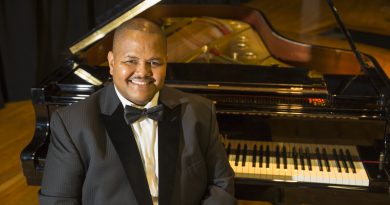The Future Of Technology Brings The Music Of The Past Back
In 1976, electronic music pioneer Mort Garson released a largely unknown album called Plantasia. Decades later, the album was uploaded in its entirety to YouTube. Collectively, the songs on the record have millions of views on the website. In 1998, indie folk band Neutral Milk Hotel released In the Aeroplane Over the Sea. A little over five years later, the album gained recognition as a meme on message board 4Chan; it became one of the best-selling vinyl pressings of 2008.
How does this sudden surge in relevance happen for these musicians? The internet.
The internet connects people across the world, causing trends to carry over and seize public attention. The ability to post anything and everything while potentially reaching an audience leads to obscure finds, such as fidget spinners and Japanese game shows, which have gained popularity outside of their target audience.
However, one little acknowledged feature of the internet is the ability to post and find anything from any era easily. Apply this to music, this means streams and album sales for artists that were active long before the listener was even born.
Of course, listening to music older than dirt isn’t a modern concept. A famous example: Eric Clapton listening and eventually imitating Robert Johnson, who died four decades before Clapton encountered the music.
One could even argue how late guitarist Jeff Healey regularly performed Tin Pan Alley (19th and 20th century music) standards in the ‘80s and ‘90s, or even how classical literature extends centuries before the internet yet still had its audience.
One thing to keep in mind is that those who find old recordings or sheet music by plowing past 78’s or shoveling through old bookstores typically devote their lives to music and are not casual listeners or bored teenagers down a Google rabbit hole. It’s true that music still finds listeners without the use of modern technology—it’s easier than ever before. International Music Score Library Project (IMSLP), or the Petrucci Music Library, holds millions of pieces of sheet music.
That means that anybody with Wi-Fi and musical competency can easily perform any Gregorian chant, instead of having to dig through a university library for hours on end to find 12th-century compositions.
What does this all mean? Well, there is a trend among many musicians nowadays to use the aesthetic of older music and use it in a modern context. This sentiment applies to movies, drawings and nearly all other forms of entertainment, but music fights time better than anything else. For instance, Lana Del Rey’s music has a nostalgic feel, which is rooted in her use of tropes found in older music.
In 2014, Lady Gaga collaborated with Tony Bennett and released Cheek to Cheek, an album entirely made of jazz standards dating to as far back as 1931.
Bruno Mars released 24K Magic in 2016, which borrows from soul and funk acts from the mid-70s and early-80s. Even outside of the realm of pop, sample-based music like lo-fi hip-hop exploded in popularity and more producers have access to older recordings to make unique beats.
All of this seems obvious to some, but most fail to see the power that one song can hold to shape popular music, no matter how old. Understanding how the internet preserves old recordings also redefines the concept of success and fame for a musician.
Instead of focusing solely on album sales, artists must account for long-term goals like lasting impact, influence on future musicians and creating a work of art that won’t fade as trends change.




